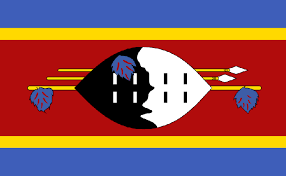Language/Swati/Grammar/How-to-Use-Be
Hi Swati learners! 😊
In this lesson, we will be discussing the verb "be" in Swati. "Be" is an important verb that helps us identify a person or thing, describe its state or existence, and express relationships between things. Understanding how to use "be" is crucial in mastering Swati grammar.
Let's start!
After mastering this lesson, these related pages might interest you: How to Use Have & Plurals.
What is the verb "be" in Swati?[edit | edit source]
"Be" is a copular verb in Swati. Copular verbs connect the subject of a sentence to a predicate that describes or identifies it. In Swati, "be" has various forms that agree with the subject of the sentence in gender and number.
Here are the different forms of "be" in Swati:
| Person | Prefix | Suffix | Example |
|---|---|---|---|
| 1st singular | ngi- | -ni | Ngi ni Njabulo. (I am Njabulo.) |
| 2nd singular (masc.) | wu- | -ni | Wu ni mfowethu. (You are my brother.) |
| 2nd singular (fem.) | yi- | -ni | Yi ni sisi wami. (You are my sister.) |
| 3rd singular (masc.) | u- | -ngi | U ngi Mvelase. (He is Mvelase.) |
| 3rd singular (fem.) | yi- | -ngi | Yi ngi Khanyisile. (She is Khanyisile.) |
| 1st plural | si- | -ni | Si ni kukhona. (We are there.) |
| 2nd plural | ni- | -ni | Ni ni ngempela? (Are you for real?) |
| 3rd plural | ba- | -ngi | Ba ngi bantwana besifazane. (They are girls.) |
How to use "be" in Swati[edit | edit source]
- Identifying a person or thing
In Swati, we use "be" to identify a person or thing. We can do this by using "be" with a noun or an adjective. Here are some examples:
- This is my friend. --> Loko ngi yintombazane yami. (literally, "This is girl of mine.")
- She is tall. --> Yi ngi grand. (literally, "She is tall.")
- They are my parents. --> Ba ngi baba nama. (literally, "They are father and mother of mine.")
- Describing a state or existence
We can also use "be" to describe a state or existence. In this case, we use "be" with an adjective or a prepositional phrase. Here are some examples:
- I am happy. --> Ngi ni happy. (literally, "I am happy.")
- The book is on the table. --> Lincwadi li ngi table. (literally, "The book is on top of table.")
- The boy is in the house. --> Indoda i ngi bhayise. (literally, "The man is inside the house.")
- Expressing relationships between things
We can also use "be" to express relationships between things. In this case, we use "be" with a preposition. Here are some examples:
- The key is in the drawer. --> Isoka li ngi nyaqeleleni. (literally, "The key is in [inside] the drawer.")
- The cat is under the bed. --> Ingwe i ngi ndlebeni. (literally, "The cat is in [under] the bed.")
- The pen is next to the notebook. --> Ipene li ngi phezulu kwesikibho. (literally, "The pen is on [above] the notebook.")
Practice with dialogue[edit | edit source]
Here's a dialogue to practice using "be" in Swati:
- Person 1: Lomuntu yini lo? (Who is this person?)
- Person 2: U ngi musa wami. (He is my brother.)
- Person 1: Woza la, ningaba nathi. (Come here, join us.)
- Person 2: Si ni kukhona. (We are there.)
- Person 1: Yi ngi high school loko? (Are you in high school?)
- Person 2: Yebo, ngi yi high school. (Yes, I am in high school.)
Tips for mastering "be" in Swati[edit | edit source]
To improve your Swati grammar, you can also use the Polyglot Club website. Find native speakers and ask them any questions!
Here are some tips for mastering "be" in Swati:
1. Pay attention to gender and number agreement between the subject and "be." 2. Practice using "be" with different types of sentences (identifying, describing, expressing relationships) to help you get comfortable with its different forms and functions. 3. Use real-world examples to help you understand how "be" is used in context.
Conclusion[edit | edit source]
In this lesson, we learned about the verb "be" in Swati. "Be" is a copular verb that helps us identify, describe, and express relationships between people or things. By understanding how to use "be" correctly, you can improve your Swati grammar and communication skills.
➡ If you have any questions, please ask them in the comments section below.
➡ Feel free to edit this wiki page if you think it can be improved. 😎
Now that you've completed this lesson, don't stop learning! Check out these related topics: Negation & Future Tense.
Other Lessons[edit | edit source]
- How to Use Have
- Questions
- Plurals
- Conditional Mood
- Give your Opinion
- Negation
- Future Tense
- Adjectives
- Pronouns
Sources[edit | edit source]

